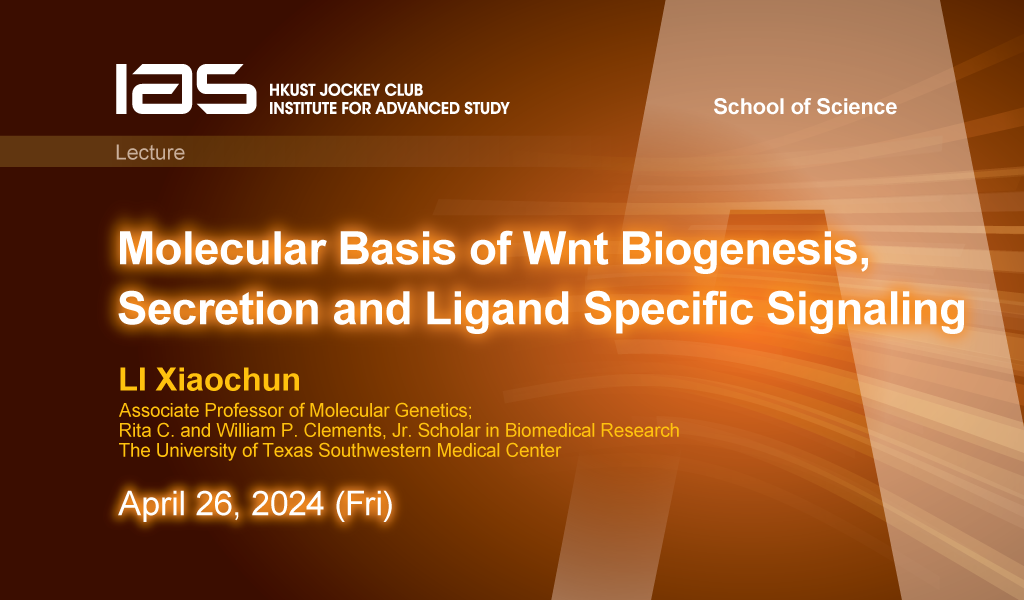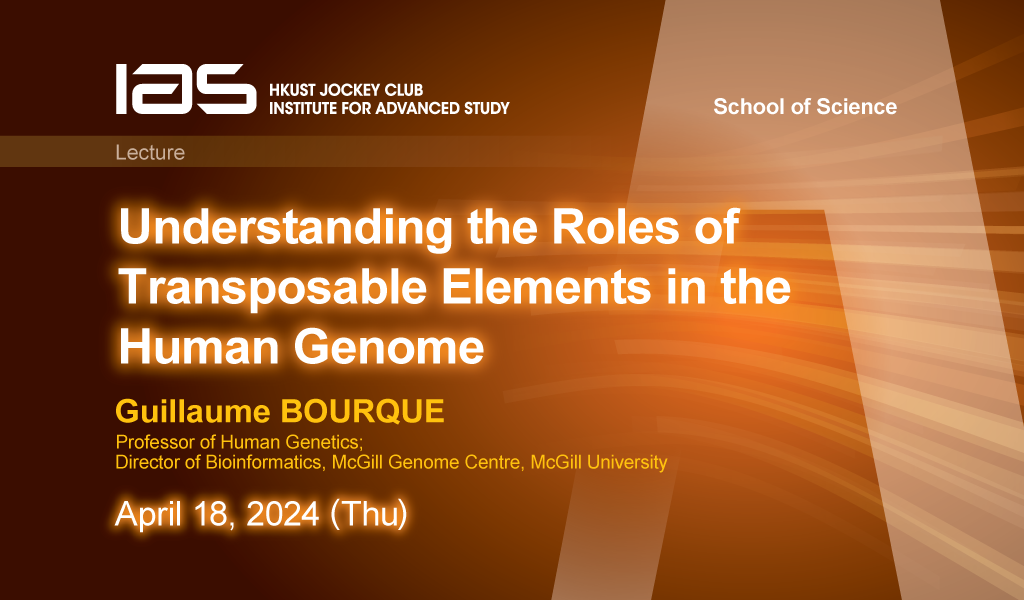Speaker: Professor Dima KOZAKOV
Institution: Department of Applied Mathematics and Statistics Laufer Center for Physical and Quantitative Biology, Stony Brook University
Hosted by: Professor Xuhui HUANG
Abstract
Three-dimensional structure prediction of macromolecular interaction complex is an important component in small molecular and biologics drug discovery. The search space includes the 6D rotational/translational space of mutual rigid body orientations of receptor and ligand, as well as additional degrees of freedom that represent the flexibility of the two molecules. Solving this problem requires detailed sampling and optimization of an energy-based scoring function.
Since the energy function has a large number of local minima separated by high barriers, the minimization problem is extremely challenging. The search space includes the 6D rotational/translational space as well as additional degrees of freedom that represent the flexibility of the macromolecules and is a manifold. Here we present effective approaches for different steps of docking protocols, which effectively use manifold geometry to significantly speed up the search. Specifically we will describe Fast Manifold Fourier Transform (FMFT) approach for effective global grid based sampling for macromolecular docking, and local and medium range optimization using exponential map parametrization for docking refinement. The method enables us to calculate approximate partition function of the system, and identify likely minima. The methods described above have been blindly validated in international docking competitions CAPRI (protein docking) and D3R (protein-ligand docking) and were among the best performers in both. Additionally we demonstrate application of our techniques to uncovering principles of drug discovery.
About the speaker
Dr. Dima Kozakov received a B.S. and M.S. in Applied Mathematics and Physics at the Moscow Institute of Physics and Technology, and PhD in Biomedical Engineering at Boston University. Currently he is Associate Professor in the Department of Applied Mathematics at Stony Brook University, Affiliate Member at Laufer Center for Physical and Quantitative Biology, and Affiliate Member at Institute of Advance Computational Sciences. Dr. Kozakov research focuses on the development of mathematically elegant, computationally efficient and physically accurate algorithms for modeling of biological macromolecules, with emphasis on molecular interactions and drug design. Dr. Kozakov’s protein-protein docking approach ClusPro has been consistently the best automatic approach in the worldwide blind protein docking experiment CAPRI. Currently ClusPro has more than 20000 users, with more than 200,000 jobs run in the last few years. The docking tools developed by Dr. Kozakov are licensed by Schrodinger, largest pharmaceutical software vendor in the world, and are used by multiple major pharma worldwide. His research has been funded by the National Institute of Health (NIH), National Science Foundation (NSF), and Binational (US-Israel) Science Foundation (BSF).
Institution: Department of Applied Mathematics and Statistics Laufer Center for Physical and Quantitative Biology, Stony Brook University
Hosted by: Professor Xuhui HUANG
Abstract
Three-dimensional structure prediction of macromolecular interaction complex is an important component in small molecular and biologics drug discovery. The search space includes the 6D rotational/translational space of mutual rigid body orientations of receptor and ligand, as well as additional degrees of freedom that represent the flexibility of the two molecules. Solving this problem requires detailed sampling and optimization of an energy-based scoring function.
Since the energy function has a large number of local minima separated by high barriers, the minimization problem is extremely challenging. The search space includes the 6D rotational/translational space as well as additional degrees of freedom that represent the flexibility of the macromolecules and is a manifold. Here we present effective approaches for different steps of docking protocols, which effectively use manifold geometry to significantly speed up the search. Specifically we will describe Fast Manifold Fourier Transform (FMFT) approach for effective global grid based sampling for macromolecular docking, and local and medium range optimization using exponential map parametrization for docking refinement. The method enables us to calculate approximate partition function of the system, and identify likely minima. The methods described above have been blindly validated in international docking competitions CAPRI (protein docking) and D3R (protein-ligand docking) and were among the best performers in both. Additionally we demonstrate application of our techniques to uncovering principles of drug discovery.
About the speaker
Dr. Dima Kozakov received a B.S. and M.S. in Applied Mathematics and Physics at the Moscow Institute of Physics and Technology, and PhD in Biomedical Engineering at Boston University. Currently he is Associate Professor in the Department of Applied Mathematics at Stony Brook University, Affiliate Member at Laufer Center for Physical and Quantitative Biology, and Affiliate Member at Institute of Advance Computational Sciences. Dr. Kozakov research focuses on the development of mathematically elegant, computationally efficient and physically accurate algorithms for modeling of biological macromolecules, with emphasis on molecular interactions and drug design. Dr. Kozakov’s protein-protein docking approach ClusPro has been consistently the best automatic approach in the worldwide blind protein docking experiment CAPRI. Currently ClusPro has more than 20000 users, with more than 200,000 jobs run in the last few years. The docking tools developed by Dr. Kozakov are licensed by Schrodinger, largest pharmaceutical software vendor in the world, and are used by multiple major pharma worldwide. His research has been funded by the National Institute of Health (NIH), National Science Foundation (NSF), and Binational (US-Israel) Science Foundation (BSF).
18 Dec 2019
10:30am - 12pm

Where
Room 4504, 4/F (Lifts 25/26), Academic Building, HKUST
Speakers/Performers
Professor Dima KOZAKOV
Department of Applied Mathematics and Statistics Laufer Center for Physical and Quantitative Biology, Stony Brook University
Department of Applied Mathematics and Statistics Laufer Center for Physical and Quantitative Biology, Stony Brook University
Organizer(S)
Department of Chemistry
Contact/Enquiries
chivy@ust.hk
Payment Details
Audience
Faculty and Staff, PG Students
Language(s)
English
Other Events

26 Apr 2024
Seminar, Lecture, Talk
IAS / School of Science Joint Lecture - Molecular Basis of Wnt Biogenesis, Secretion and Ligand Specific Signaling
Abstract
Wnt signaling is essential to regulate embryonic development and adult tissue homeostasis. Aberrant Wnt signaling is associated with cancers. The ER-resident membrane-bound O-acyltransfera...

18 Apr 2024
Seminar, Lecture, Talk
IAS / School of Science Joint Lecture - Understanding the Roles of Transposable Elements in the Human Genome
Abstract
Transposable elements (TEs) have expanded the binding repertoire of many transcription factors and, through this process, have been co-opted in different transcriptional networks. In this ...
